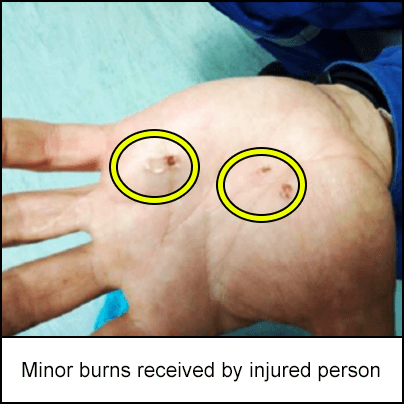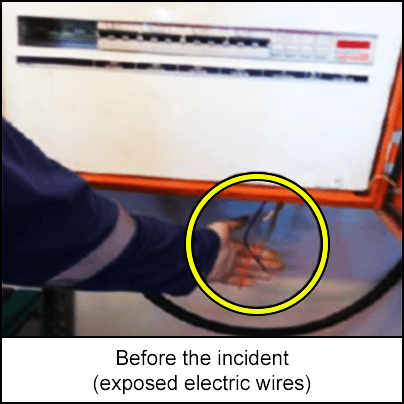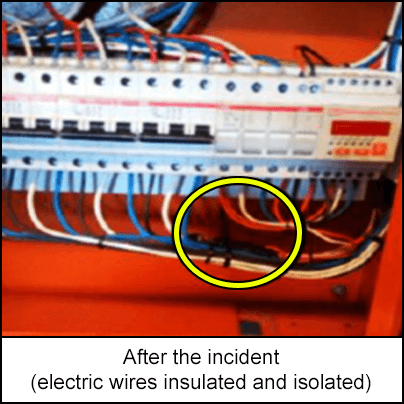-
What happened?
A step-down transformer was disconnected from its power source on the distribution box of a machinery container.
The bare wires were left exposed but were not clearly visible under the outer shell of the distribution box.
The machinery container was put back on the deck of the marine vessel and connected to the electricity supply (415 V, 3-phase).
A dive technician was connecting another piece of equipment to the distribution box and moved the wires aside for a better view.
The technician received an electric shock to the left hand.

-
Why did it happen?
The dive technician presumed the wires were not live – but did not check this before attempting to move them.
Lack of post-job communication – no information about the wires being left outside the distribution box following the removal of the step-down transformer.
The exposed wires were not identified as a hazard in the pre-job planning.

-
What did they learn?
All exposed electrical wires should be considered live until confirmed otherwise.
Any changes to vessel equipment should go through a proper change management process.
All equipment should be inspected and confirmed fit for purpose before use.

-
Ask yourself or your crew
What pre-start up checks should you do before starting work on electrical equipment?
When doing work on electrical equipment, how do you know it is safe?
How do you check if wires are live or not?
What PPE should you have to ensure you can do your job safely?
How can we ensure that residual hazards are communicated as part of post or pre-job reviews?

Add to homescreen
Content name
Select existing category:
Content name
New collection
Edit collection
What happened?
A step-down transformer was disconnected from its power source on the distribution box of a machinery container.
The bare wires were left exposed but were not clearly visible under the outer shell of the distribution box.
The machinery container was put back on the deck of the marine vessel and connected to the electricity supply (415 V, 3-phase).
A dive technician was connecting another piece of equipment to the distribution box and moved the wires aside for a better view.
The technician received an electric shock to the left hand.

Why did it happen?
The dive technician presumed the wires were not live – but did not check this before attempting to move them.
Lack of post-job communication – no information about the wires being left outside the distribution box following the removal of the step-down transformer.
The exposed wires were not identified as a hazard in the pre-job planning.

What did they learn?
All exposed electrical wires should be considered live until confirmed otherwise.
Any changes to vessel equipment should go through a proper change management process.
All equipment should be inspected and confirmed fit for purpose before use.

Ask yourself or your crew
What pre-start up checks should you do before starting work on electrical equipment?
When doing work on electrical equipment, how do you know it is safe?
How do you check if wires are live or not?
What PPE should you have to ensure you can do your job safely?
How can we ensure that residual hazards are communicated as part of post or pre-job reviews?
A worker received an electrical shock to their left hand when they touched exposed live wires in a distribution box (DB) of a machinery container.














